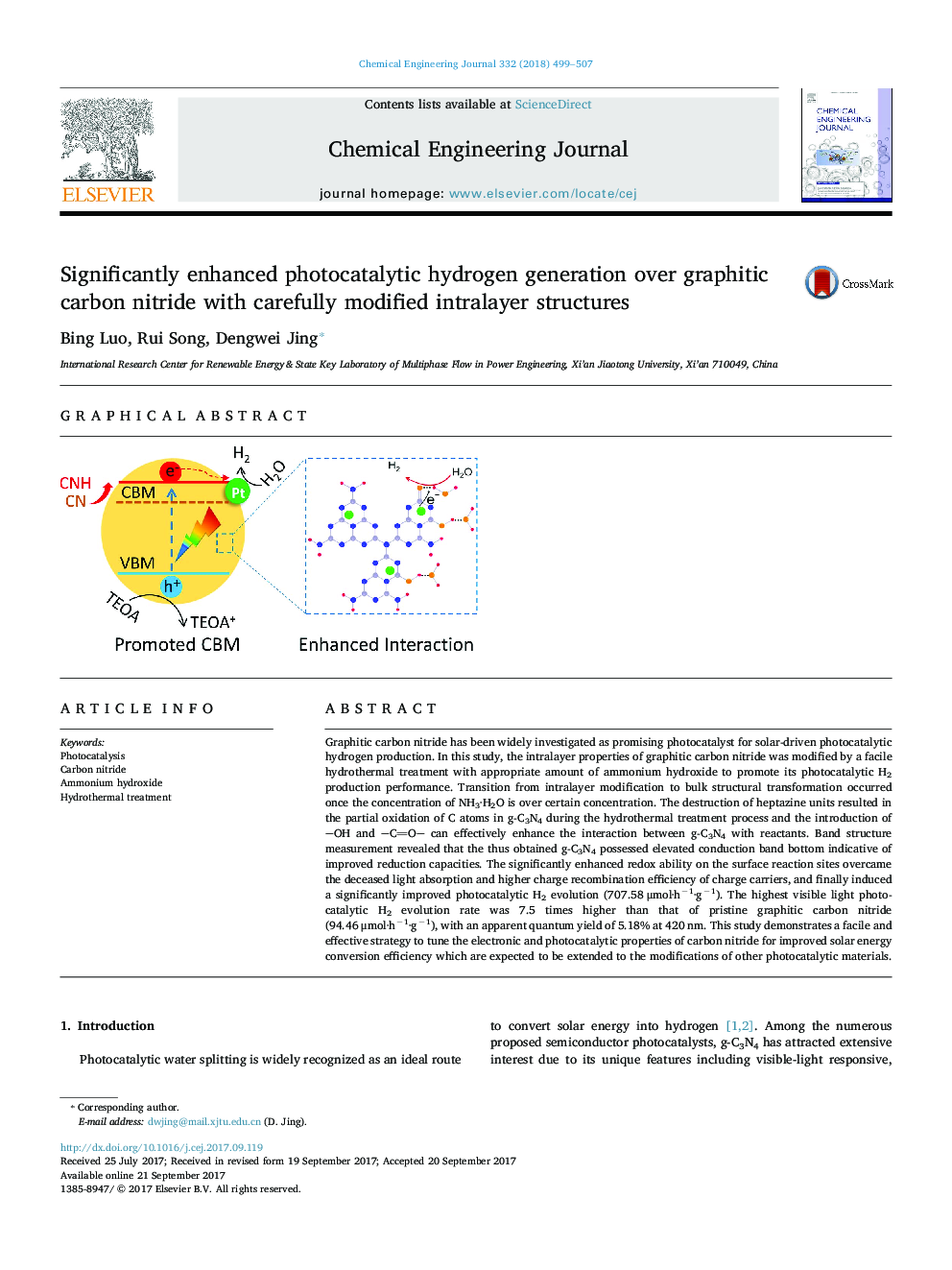| Article ID | Journal | Published Year | Pages | File Type |
|---|---|---|---|---|
| 6464998 | Chemical Engineering Journal | 2018 | 9 Pages |
â¢The intralayer property of g-C3N4 is tuned by hydrothermal treatment with NH3·H2O.â¢Enhanced interaction between photocatalysts with reactant molecules is achieved.â¢Modified g-C3N4 shows significantly enhanced photocatalytic H2 production.â¢Promoted reductibility and reduced overpotential lead to the improved performance.
Graphitic carbon nitride has been widely investigated as promising photocatalyst for solar-driven photocatalytic hydrogen production. In this study, the intralayer properties of graphitic carbon nitride was modified by a facile hydrothermal treatment with appropriate amount of ammonium hydroxide to promote its photocatalytic H2 production performance. Transition from intralayer modification to bulk structural transformation occurred once the concentration of NH3·H2O is over certain concentration. The destruction of heptazine units resulted in the partial oxidation of C atoms in g-C3N4 during the hydrothermal treatment process and the introduction of OH and CO can effectively enhance the interaction between g-C3N4 with reactants. Band structure measurement revealed that the thus obtained g-C3N4 possessed elevated conduction band bottom indicative of improved reduction capacities. The significantly enhanced redox ability on the surface reaction sites overcame the deceased light absorption and higher charge recombination efficiency of charge carriers, and finally induced a significantly improved photocatalytic H2 evolution (707.58 μmol·hâ1·gâ1). The highest visible light photocatalytic H2 evolution rate was 7.5 times higher than that of pristine graphitic carbon nitride (94.46 μmol·hâ1·gâ1), with an apparent quantum yield of 5.18% at 420 nm. This study demonstrates a facile and effective strategy to tune the electronic and photocatalytic properties of carbon nitride for improved solar energy conversion efficiency which are expected to be extended to the modifications of other photocatalytic materials.
Graphical abstractDownload high-res image (160KB)Download full-size image
